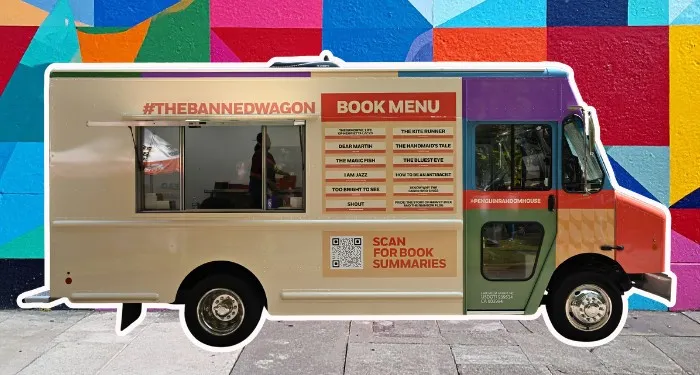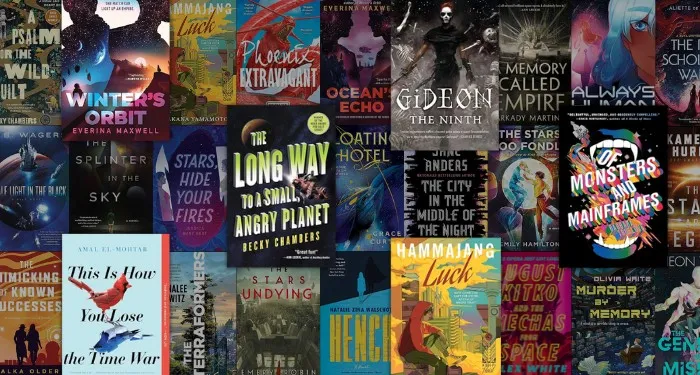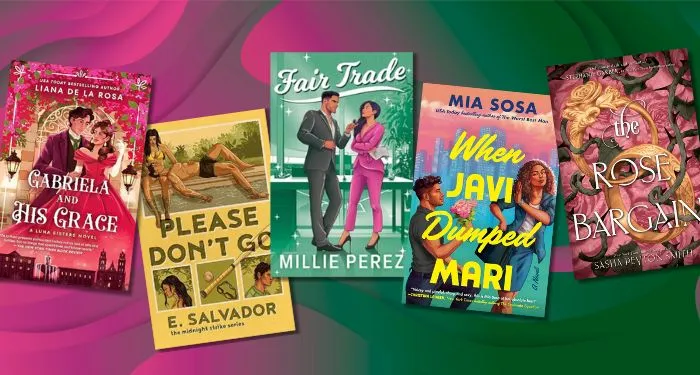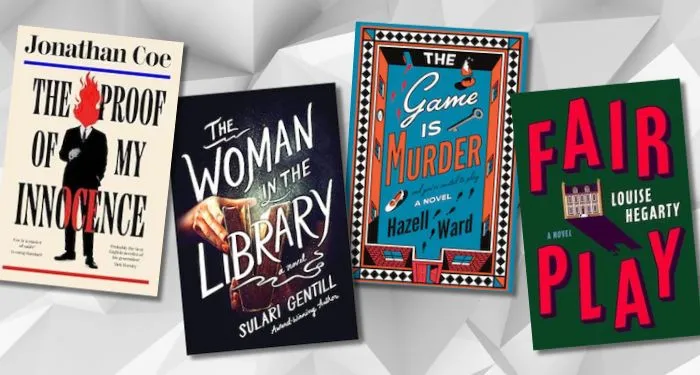For Authors
One of the most important and overlooked concepts in storytelling is the difference between what a character wants and what they truly need. It may sound simple, but understanding the need vs. want dynamic can be the key to writing stories that actually work. A character’s want gets the plot moving, but it’s their deeper need that gives the story emotional weight, lasting impact, and real connection. When authors focus too much on surface-level desires, they risk creating plots that feel hollow and characters that fail to resonate.
In today’s blog, Ginger breaks down why that difference matters so much and how recognizing it changed the way he approached storytelling. Drawing from his own experience with a debut novel that fell into this exact trap, he shares how shifting your focus from want to need can lead to characters readers care about and stories that keep them turning pages. If your writing feels like it’s missing something and you can’t quite put your finger on what, this might be the insight you’ve been looking for.
I only have the audacity to write posts with advice for authors because I’ve at least achieved some success as a self-published author, selling over 71,000 copies of my books.
However, that didn’t happen overnight. I’d actually written 11 full-length novels before I ever published my first best-seller!
My publishing career began in 2011, when I published my first ever full-length novel to Amazon, and until I became a little better known, that book had the unfortunate distinction of not having sold a single copy.
I often look back at it and think about how I might approach writing the novel differently, knowing what I know now about successful storytelling.
The book in question is Adventure Eddy, and it’s a cringingly autobiographical crime thriller about a young, redheaded Englishman spending a year in Paris, and how he gets mixed up in a string of hotel robberies while he’s there.
Now, don’t get me wrong—the book isn’t bad. I read it to my kids, actually, and they said they enjoyed it. It’s just that it reads kind of like the 1930s adventure novels that inspired it, by authors like Leslie Charteris, and that isn’t necessarily a narrative decision destined to succeed in the 21st century.
My hero, “Adventure” Eddy, is a young and adventurous man and he decides to solve a string of hotel robberies in Paris. The problem is, he doesn’t have a really convincing reason why.
I was inspired by adventurous heroes like The Saint, who would do things like that back in the 1930s. However, in the modern day, it seemed a little ridiculous for my hero to risk life, limb, and expulsion chasing gun-toting bad-guys on a whim when he should have been focusing on his studies instead.
It made me realize that I’d made him want something, while really successful fiction has their main characters need something.
The difference between want and need is massive—game-changing, in fact—and it’s one of the major elements that makes a story and its characters compelling.
It’s also something a lot of authors (myself included, circa 2011) don’t quite understand the difference between.
One of the common red flags I identify when working with struggling self-published authors is that their characters want things, while readers expect them to need things.
Wants are surface-level—they’re shiny desires that spark a character’s journey, like wanting fame, love, or adventure. Think of Indiana Jones seeking “fortune and glory” in Temple of Doom, for example.
Needs, though, are primal. They’re the gut-wrenching, do-or-die stakes that drive a character to the edge and keep readers turning pages.
Think of it like this: a want is a kid begging for ice cream; a need is that same kid fighting for air in a burning building.
The first might be appropriate for an ages 3-5 children’s book, but the second would make compelling reading for every age-group.
Dan Harmon’s Story Circle nails this dynamic. In his framework, a character starts in a comfort zone, wants something, and enters an unfamiliar world to chase it. But the best stories twist—the character discovers they need something deeper instead, often tied to their flaws or fears—and that’s when they struggle, adapt, get what they need (or don’t), and finally return changed from the experience.
That shift from want to need is where the magic happens in storytelling. It’s what makes a story feel urgent and real.
Let’s unpack this with some literary examples and tips to make your characters’ needs pop off the page.
Want vs. Need in Popular Literature
Let’s look at some stories to see how wants and needs shape a narrative.
A character driven by want can be fun, but one driven by need? That’s unforgettable.
The Great Gatsby by F. Scott Fitzgerald
Want: Jay Gatsby wants to win back Daisy Buchanan, his lost love, with his lavish parties and newfound wealth. It’s a romantic dream, all glitz and yearning.
Need: Deep down, Gatsby needs to reclaim his past and prove he’s worthy of Daisy, tied to his insecurity about his humble origins. His obsession isn’t just love, it’s about rewriting his identity to escape the shame of being “nobody.”
Impact: Gatsby’s want keeps the story sparkling—those parties are pure Jazz Age eye candy. But his need makes it tragic. His desperate pursuit of a past he can’t recapture drives him to ruin, and that gut-punch ending hits because we feel his deeper stakes. If he just wanted Daisy for fun, we’d shrug when it falls apart.
The Hunger Games by Suzanne Collins
Want: Katniss Everdeen wants to survive the Hunger Games to get back to her sister, Prim, and her quiet life in District 12.
Need: Katniss needs to protect Prim and spark hope in Panem, embracing her role as the Mockingjay to fight the Capitol’s tyranny. Her survival instinct morphs into a need to stand for something bigger.
Impact: Katniss’s want—survival—hooks us early; we’re rooting for her to outsmart the arena. But her need to protect Prim and inspire rebellion gives the story weight. Without that need, she’s just another survivor, not a symbol that sets Panem ablaze. The shift from personal survival to revolutionary purpose makes her arc epic.
Harry Potter and the Sorcerer’s Stone by J.K. Rowling
Want: Harry wants to fit in at Hogwarts and escape his miserable life with the Dursleys. He’s thrilled to be a wizard and craves belonging.
Need: Harry needs to confront Voldemort and accept his destiny as “The Boy Who Lived,” tied to his parents’ sacrifice and his role in the wizarding world.
Impact: Harry’s want makes him relatable—who hasn’t wanted to find their place? But his need to face Voldemort, rooted in his identity and loss, drives the stakes sky-high. If he just wanted friends, the story’s a cozy school tale. His need to survive makes the series a battle of good vs. evil instead, keeping us glued through seven books.
As you can see, need always trumps want when it comes to compelling storytelling.
My Adventure Eddy flopped on this front. Eddy’s curiosity-driven want was flimsy. He was risking his life, and the life of his friends, trying to solve a series of crime out of nothing more than curiosity.
Tying his quest to a need would’ve made his reckless choices feel reasonable, not reckless.
Needs anchor a story; wants just get it rolling.
Why Need Trumps Want
Wants are the spark—they get your character out the door. But needs are the engine, pushing them through hell and back.
In Harmon’s Story Circle, the twist from want to need often ties to a character’s flaw or wound.
Gatsby’s need to rewrite his past stems from his shame; Katniss’s need to fight tyranny grows from her love for Prim; Harry’s need to face Voldemort comes from his parents’ death. Deeper stakes make readers care more.
In my own story, Eddy merely wanting to solve a mystery means he’s just a nosy kid. It would have been far more compelling if he needed something.
For self-published authors, this is a piece of advice that might seem obvious in retrospect, but it’s definitely worth thinking about. There are so many books being published every day, and readers on Amazon are picky. They’ll ditch a book if the stakes feel weak.
A character who wants something shiny might hook them for a chapter, but a character who needs something could keep them up all night.
On social media, book influencers sometimes complain that books have “pointless” protagonists and we don’t want that to be you.
(Or perhaps we need it not to be you!)
But what are some things characters would need rather than want?
Suggestions for Compelling Character Needs
Here are some needs I identified which will help drive a story and make readers care:
Saving a Loved One: Someone they love is kidnapped or threatened, like a sister held hostage by a cartel or a partner caught in a warzone. Think Taken’s Liam Neeson racing to save his daughter. It’s personal, urgent, and instantly gripping.
Protecting Home or Community: Your character risks losing their home, farm, or town to foreclosure, developers, or destruction. This is a trope I’ve always loved from westerns (including 1923, which I hated for a whole different reason!) The fight for a safe space hits hard.
Survival Against Tyranny: In a dystopia or war, your character needs to survive oppression or fight for freedom. Think 1984’s Winston Smith, whose need to resist Big Brother’s control drives his rebellion, even if it also ultimately dooms him.
Redemption or Atonement: The need to right a past wrong is a powerful motivator. In Atonement by Ian McEwan, Briony needs to make amends for a lie that ruined lives, fueling her lifelong guilt and a story that stays with readers long after they’ve turned the final page.
Identity or Belonging: A character needs to claim their true self or find a place to belong, like Offred in The Handmaid’s Tale fighting to reclaim her identity as June. This works especially well for YA or coming-of-age stories, which often attract readers trying to find their own identity through fiction.
And, of course, you can mix and match these needs. Maybe your hero needs to save their kidnapped sibling and their home from a corrupt mayor. The key is making the need personal and high-stakes, so readers feel the weight of every choice.
Keep Your Readers Hooked
If I had the chance to write Adventure Eddy all over again, here’s how I’d do it.
I’d strip away Eddy’s desire for adventure and identify the cause of it—perhaps a need to prove himself. The book is semi-autobiographical, after all (I know, I know, I cringe now) and back when I wrote it I was very self-conscious about my desire to be successful, independent, and prove myself to my parents.
Perhaps I could have had the hotel thieves steal something from Eddy that he needs to get back, instantly making the stakes more personal. Perhaps it was his grandfather’s watch, given to him by his dad upon graduation. Maybe his dad had even commented that he wasn’t sure Eddy could be trusted with it, because he was so young and reckless (which ties into why he wanted to pursue the hotel thieves in the first draft.)
When the hotel thieves steal the family heirloom, Eddy isn’t just motivated by a desire to get the watch back, he needs to get it back, otherwise it will confirm that his father was right not to trust him with it.
Even as I write that, I feel more inspired. It’s definitely a much better twist than Eddy just wanting to have an adventure. Hell, maybe I’ll go back and actually write this version!
And it kind of proves my point. Self-published authors, you’re already battling a sea of books on Amazon, so make your characters has needs to anchor your readers in your story.
Adventure Eddy taught me the hard way that wants are fun, but needs are fire. When I rewrote Eddy’s story in my head, the addition of his grandfather’s watch wasn’t just a piece of jewelry. It was Eddy’s shot at redemption, and just the thought of it turns my meh mystery into something I’d be excited to read about.
So, dig into your own character’s soul. What do they need to fix, save, or prove? Spill it in the comments, I’m dying to hear how you’re making readers care!
Share this blog
About the Author

Ginger is also known as Roland Hulme - a digital Don Draper with a Hemingway complex. Under a penname, he's sold 65,000+ copies of his romance novels, and reached more than 320,000 readers through Kindle Unlimited - using his background in marketing, advertising, and social media to reach an ever-expanding audience.



















 English (US) ·
English (US) ·